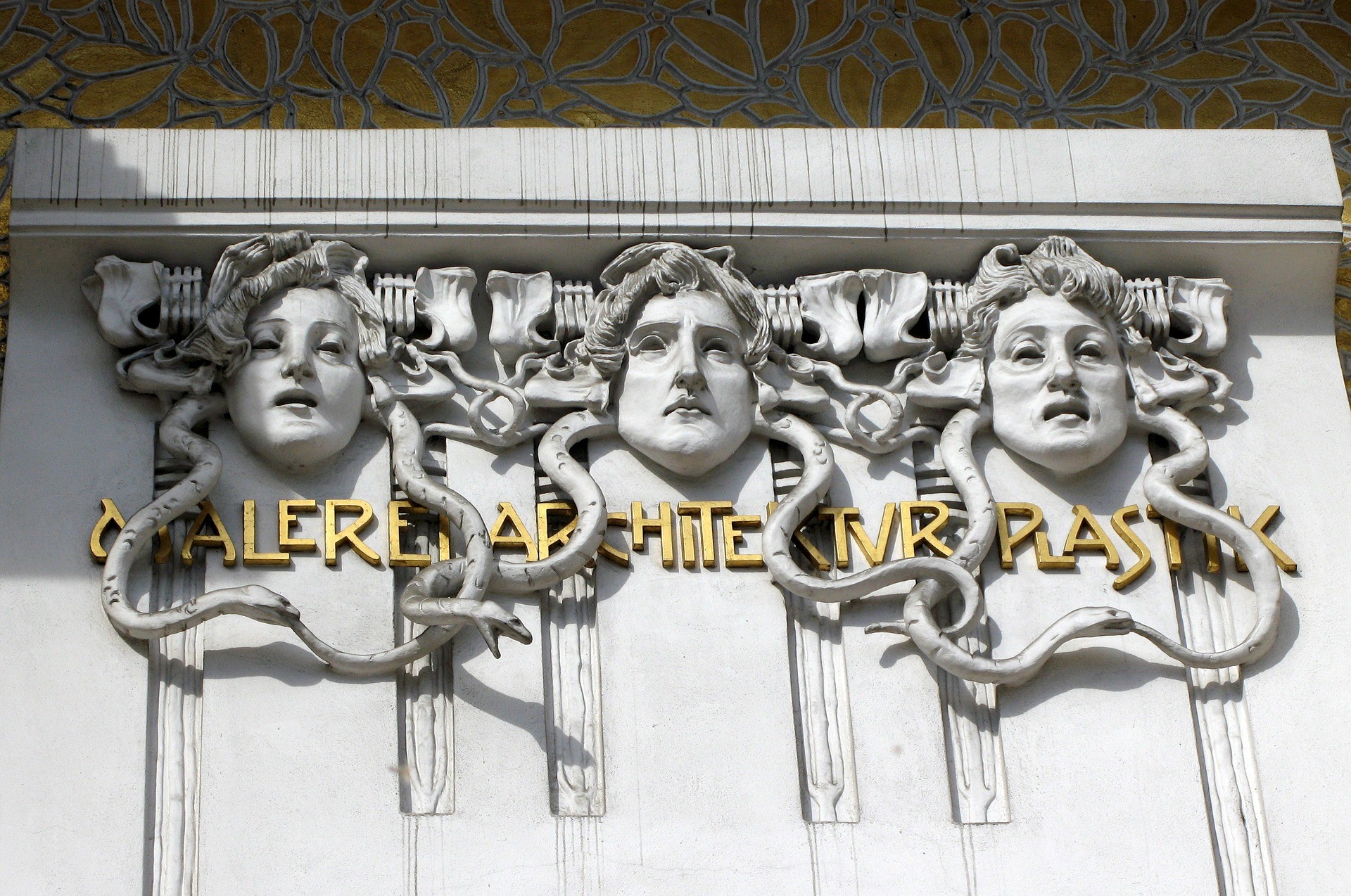
Artists represented in the associations premier included Giovanni Segantini, Ferdinand Khnopff, Constantin Meunier, Puvis De Chavanne, Auguste Rodin, Franz von Stuck and Max Klinger amongst others. Our exhibition is bound to make an epoch making effect on Vienna in the artistic field. For we are a party and intend to remain a party until the stagnating standards of art in Vienna are revived, and Austrian artists and the Austrian public have produced a picture worthy of the modern movement in art. The preface to the catalogue expressed their aims: In our first exhibitions we were at pains to show the modern art of foreign countries to the public, in order to set it a higher standard whereby to appraise our native productions… It is obviously no part of our intention to give a comprehensive view of contemporary art all we want to do is exhibit the officers of troops who are right up in the firing line. Their first exhibition was held in the greenhouses of the Society of Horticulture and Klimt designed a poster depicting Theseus and the Minotaur under the protective gaze of Athena who was to become a recurrent figure throughout Klimt’s involvement with the Secessionists. Photo: Photographic archives of the Austrian National Library, Moriz Nähr There was no strict coda or written philosophy attached to the Vienna Secession but to strive for “art as life” or an art which did not distinguish between ‘great art’ and the crafts, or art for the rich and art for the poor, was high on their agenda. Left to right: Anton Stark, Gustav Klimt (in armchair), Kolo Moser (in front of Klimt, wearing hat), Adolf Böhm, Maximilian Lenz (reclining), Ernst Stöhr (with hat), Wilhelm List, Emil Orlik (sitting), Maximilian Kurzweil (wearing cap), Leopold Stolba, Carl Moll (reclining), Rudolf Bacher.

Group portrait of Vienna Secession members on the occasion of the XIV exhibition in 1902. This conflict between new ideals and the establishment came to a head in 1897 when forty members of the Kunstlerhaus seceded and founded their own association with Gustav Klimt as their president.

The Kunstlerhaus was, in Gustav Klimt’s eyes, directed by commercial motivations which were limiting in their disregard of foreign artists and maintained art as something separate from the lives of the majority of the Austrian people. The Vienna Secession grew out of a dissatisfaction with the traditional practices of the Kunstlerhausgenossenschaft an association which could have been called the Vienna Academie.


 0 kommentar(er)
0 kommentar(er)
